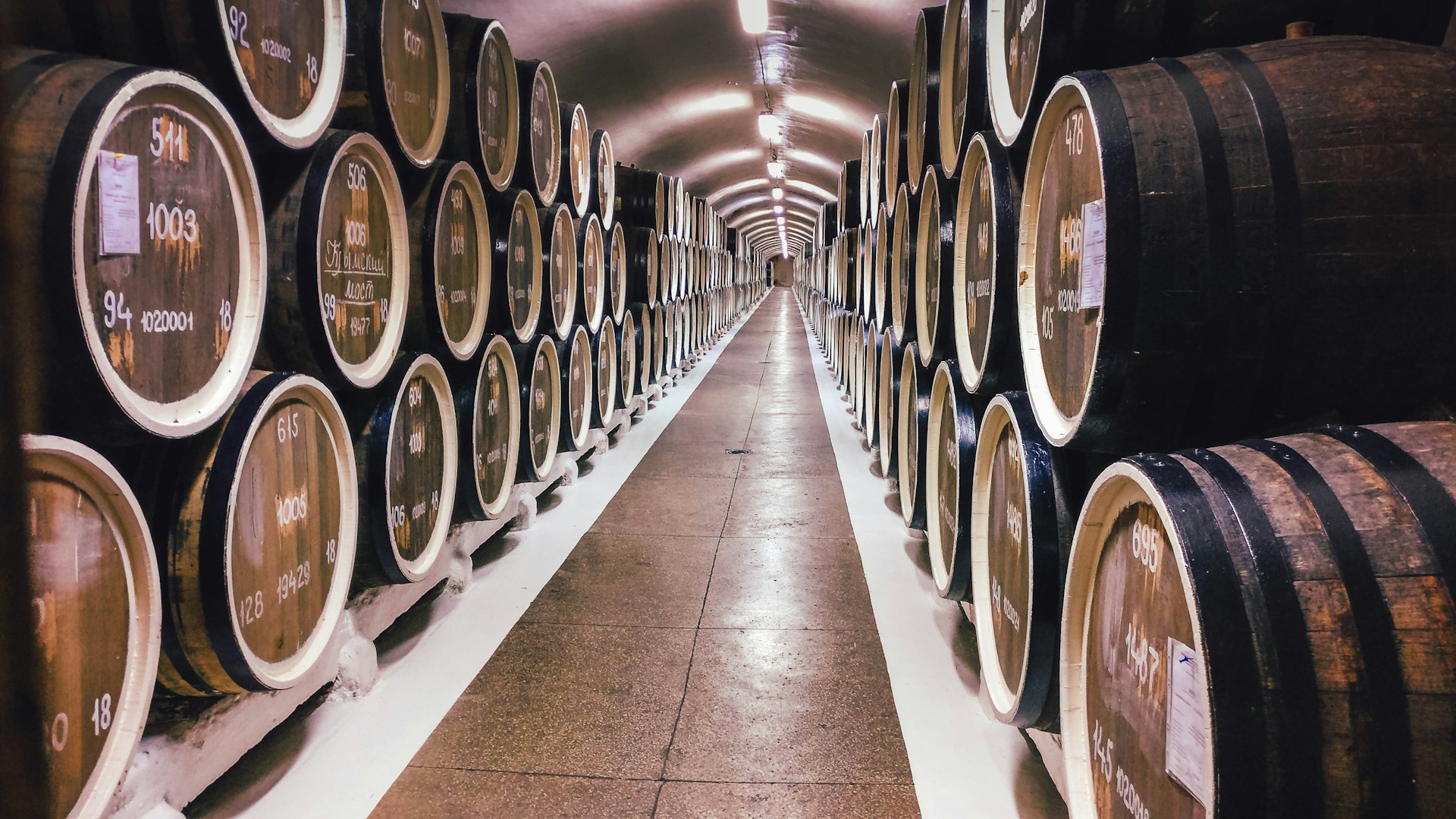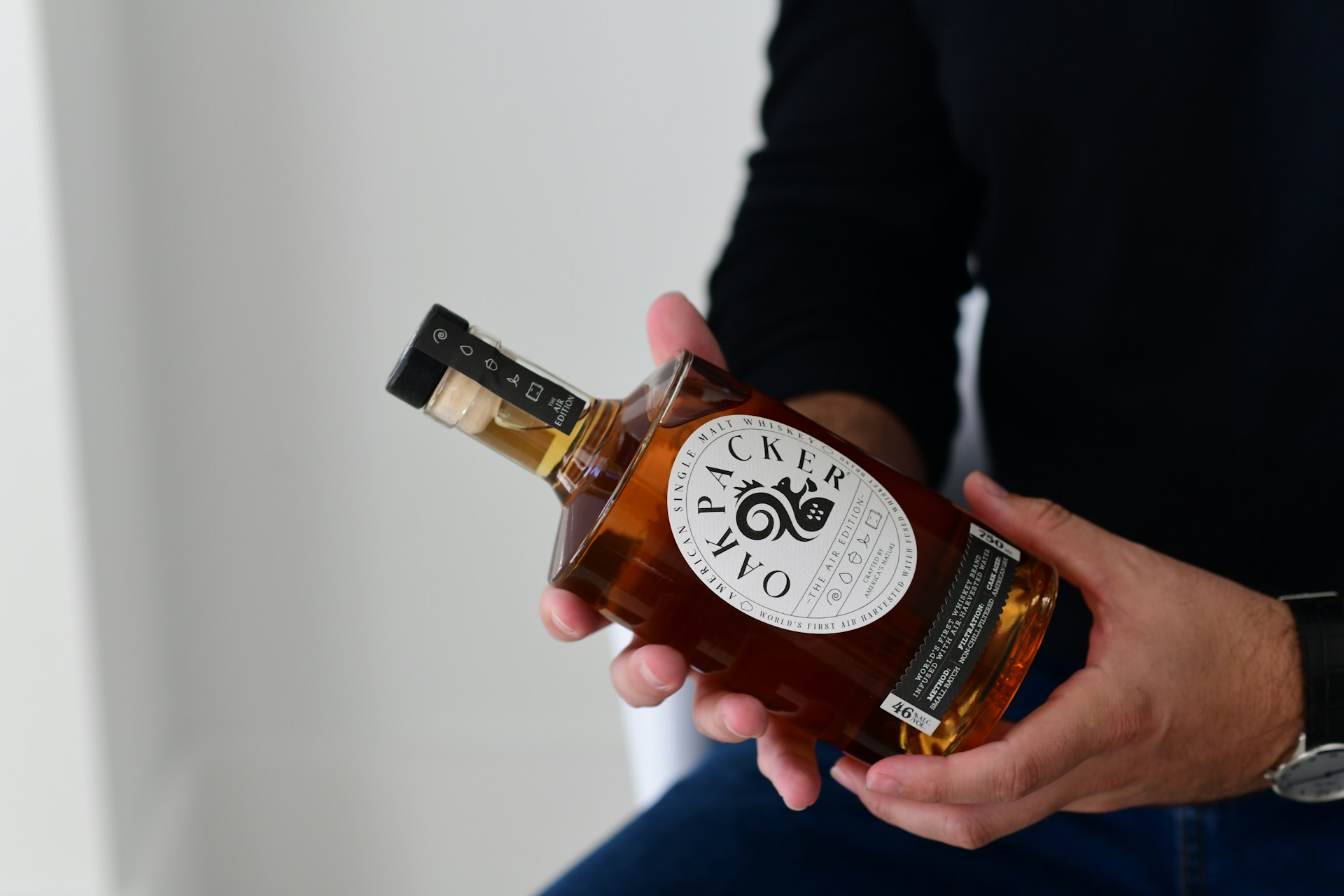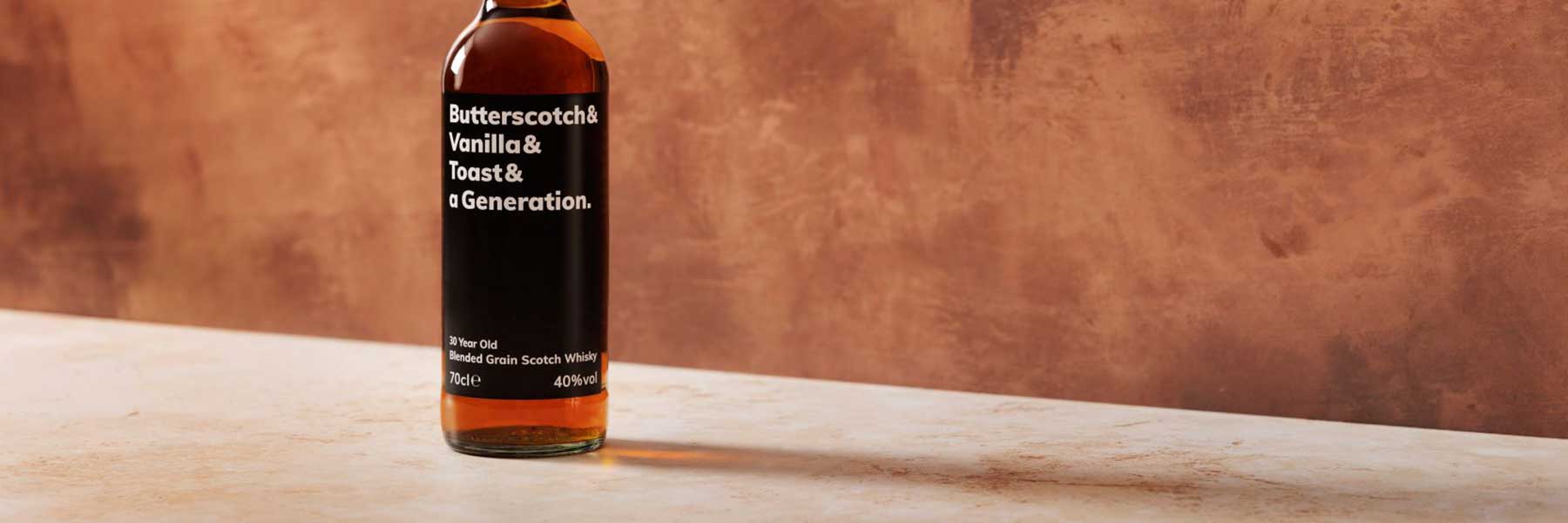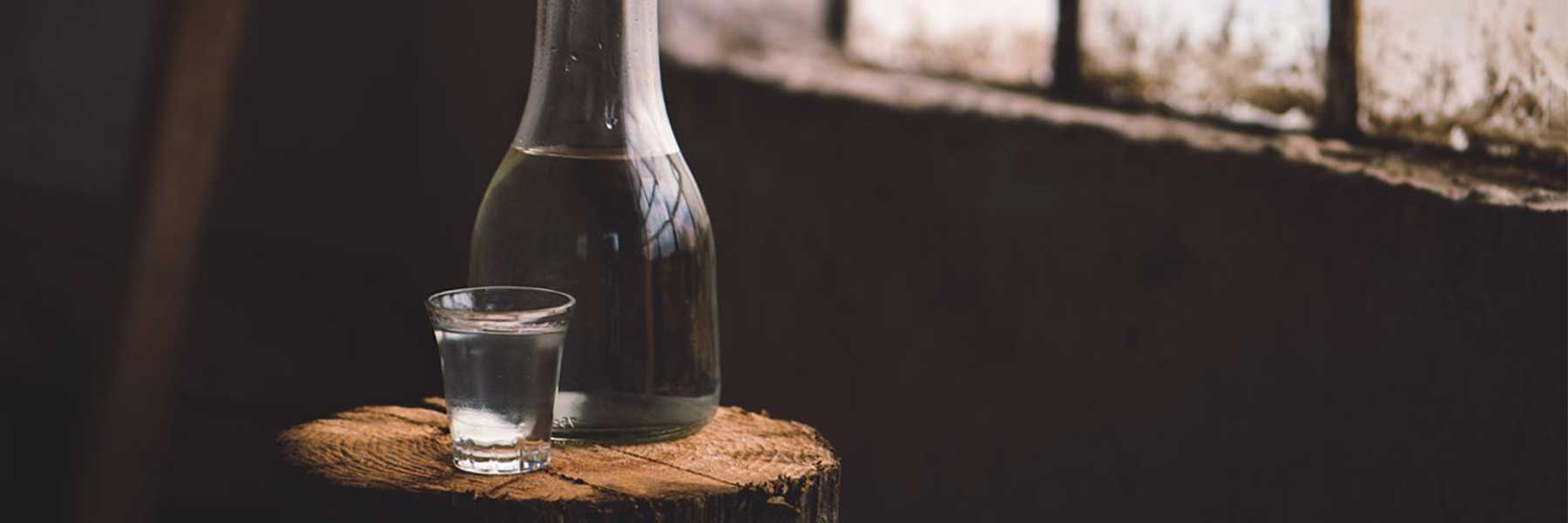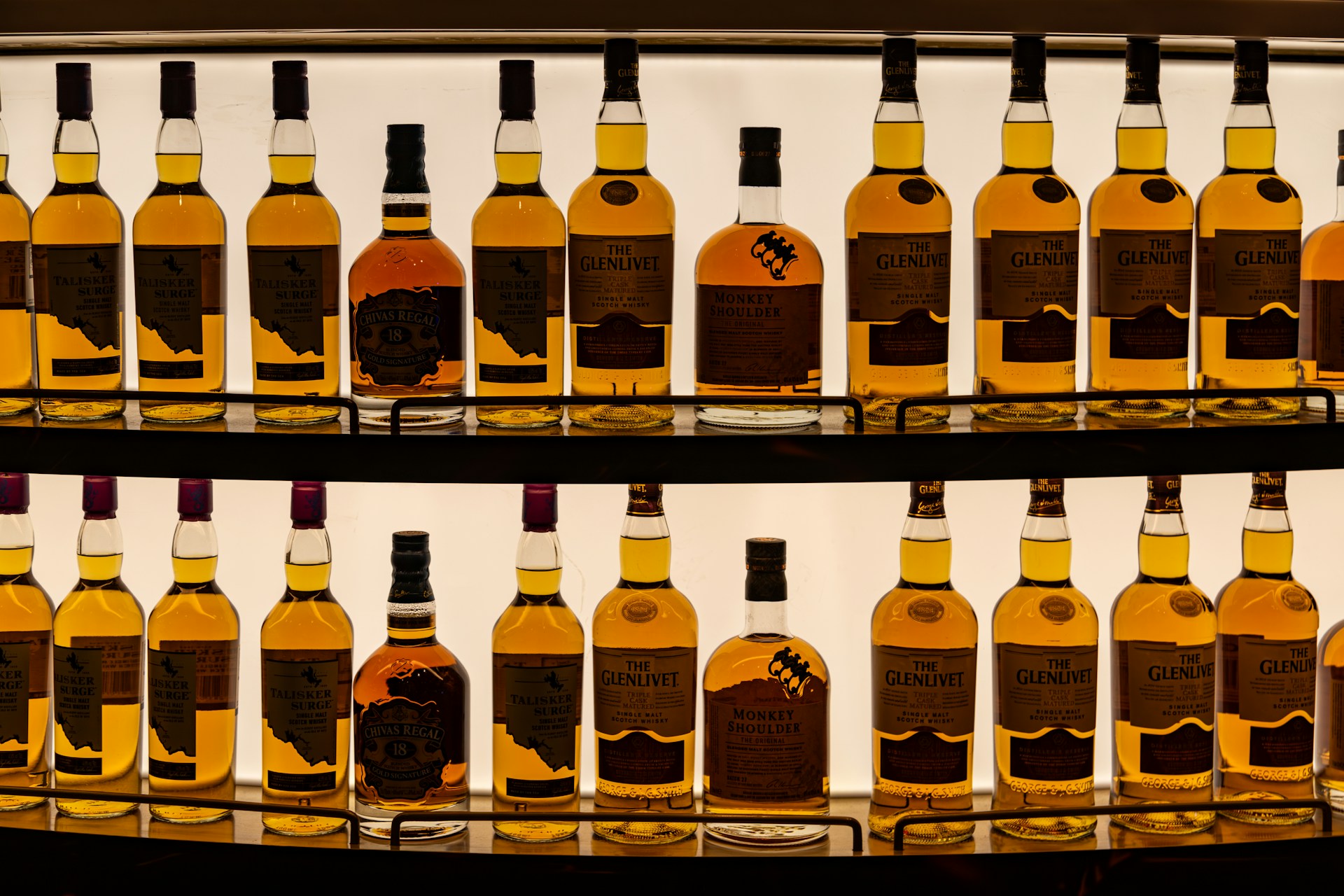Why is Whiskey Aged in Barrels?
Last updated on November 12th, 2024
Whiskey, in its raw form, is a clear spirit with a fiery kick. Yet the amber-hued, complex drink we pour into our glasses is a far cry from this initial state. The transformation occurs in wooden barrels. But what magic happens inside these wooden vessels that turn a harsh spirit into a smooth, flavorful whiskey?
This article looks at why barrels are crucial in crafting the whiskey we know and love.
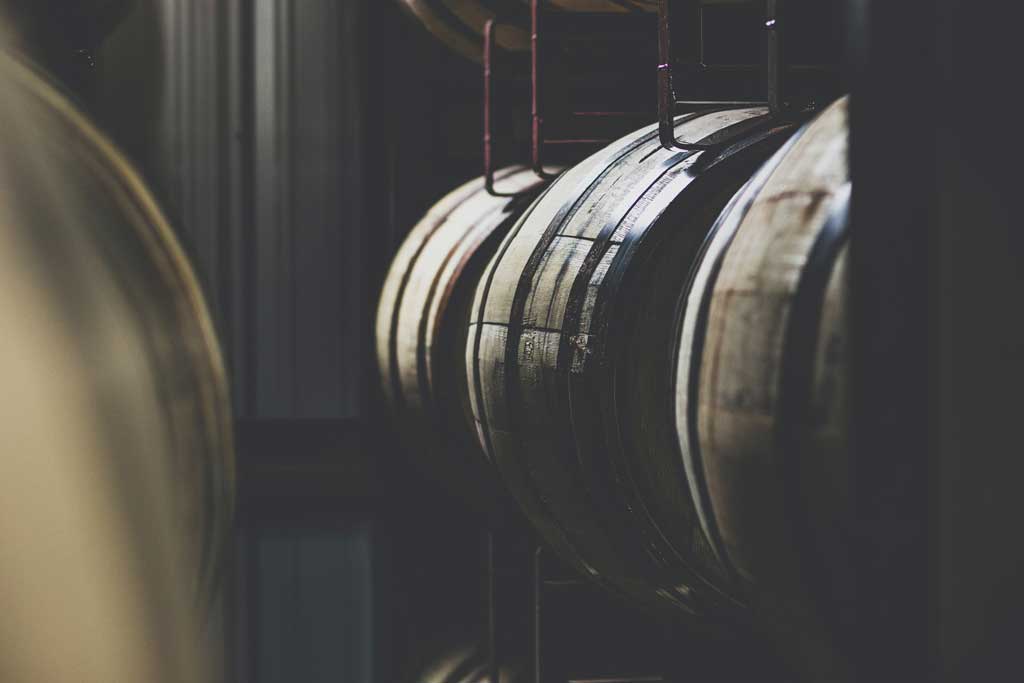
The History of Barrel Aging
In the early days of spirits production, barrels were simply a convenient way to store and transport liquor. They were sturdy, relatively leak-proof, and easier to move than clay amphorae or glass bottles. Better still, they could be easily moved due to their convex shape, being able to pivot, roll and steer into place.
But somewhere along the line, our ancestors noticed something interesting: the spirits that spent time in these wooden containers tasted better.
The exact moment of this discovery is lost to time, but we do know that by the 15th century, cognac producers in France were deliberately aging their spirits in oak barrels.The practice slowly spread to other spirits, including whiskey. In Scotland and Ireland, where whisky (or whiskey) production was taking root, barrel aging became standard practice. However, it wasn’t always about flavor enhancement. In many cases, barrels were used and reused simply because they were available and economical.
The real turning point for whiskey aging came with the rise of bourbon in America. In 1789, Baptist minister Elijah Craig supposedly began charring the inside of oak barrels to clean them for whiskey storage. Whether this story is true or not, the practice of using charred new oak barrels became synonymous with bourbon production. The Bottled in Bond Act of 1897 in the US further cemented the importance of barrel aging, requiring whiskey to be aged for at least four years in government-supervised warehouses.
Over time, what started as a practical solution for storage became an integral part of whiskey craftsmanship. Distillers began to experiment with different types of wood, barrel sizes, and aging durations, leading to the diverse world of whiskey we enjoy today. The history of barrel aging is a testament to human curiosity and the constant quest for improvement. It’s a reminder that sometimes, the best discoveries happen by accident – and that great whiskey is worth waiting for.
The Science Behind Barrel Aging
First off, we need to understand that wood is porous. It’s more like a bunch of densely packed straws bundled together. These “straws” are actually cells that once carried sap through the living tree. In a barrel, these cavities hold compounds that contribute to whiskey’s flavor.
As temperatures fluctuate, the wood expands and contracts. This acts like a pump, pushing the whiskey in and out of the wood. During warmer periods, the liquid expands and is forced into the wood. When it cools, it contracts and is drawn back out, bringing with it all sorts of flavor compounds. This process, known as extraction, is key to developing whiskey’s complex taste.
But extraction isn’t the only thing happening.
The wood and the whiskey are having a bit of a chemical party. Oxygen sneaks-in through the wood, triggering all sorts of reactions. Some of the harsh compounds in the new make spirit are transformed into smoother, more palatable ones. This is why properly aged whiskey is generally smoother than fresh distillate.
The wood itself undergoes changes too.
The heat used to char or toast the barrel breaks down some of the wood’s compounds. This creates new flavors that weren’t present in the raw wood. Lignin, a polymer found in wood, breaks down into vanillin – yes, that’s where whiskey gets its vanilla notes.
Evaporation also plays a role.
As the whiskey ages, some of the alcohol and water evaporate through the wood. This is romantically called the “angel’s share.” The rate of evaporation can affect the final alcohol content and concentration of flavors.
Time is a crucial factor in all these processes. Some reactions happen quickly, while others take years. This is why age statements on whiskey bottles aren’t just to indicate age – they represent the time needed for these complex interactions to work their magic.
Understanding the science of barrel aging has given me a newfound appreciation for what goes into each bottle. It demonstrates the remarkable interaction between wood, spirit, and time – a natural laboratory that turns harsh young spirits into the complex whiskey we enjoy.
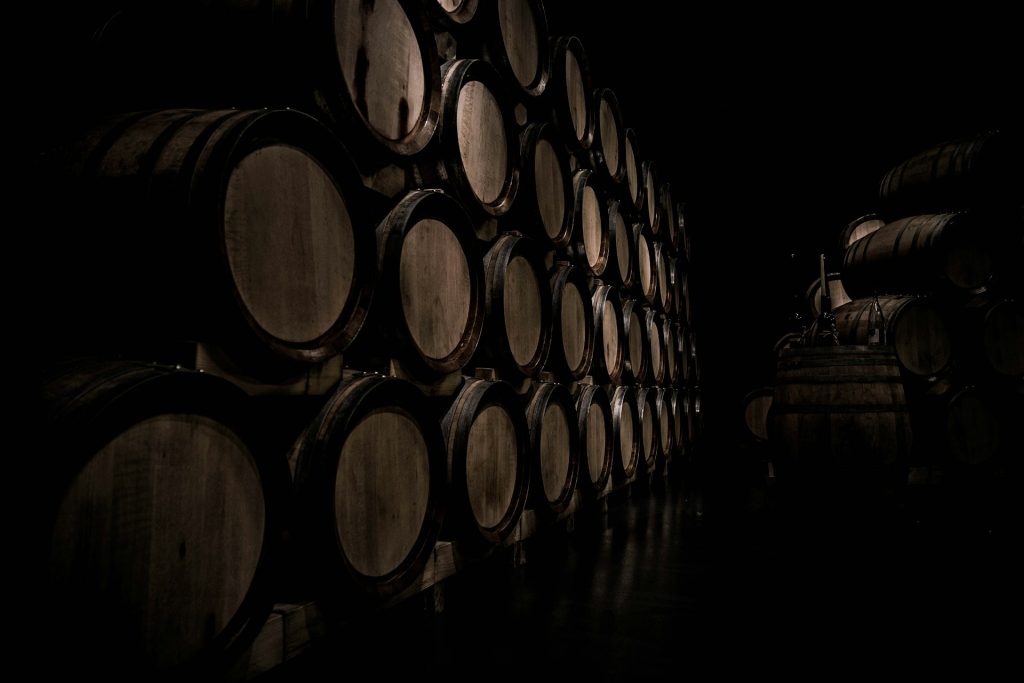
How Barrels Influence Whiskey Flavour
The transformation of raw spirit into complex whiskey is largely due to the influence of barrels. These wooden vessels play a crucial role in shaping the flavours, aromas, and colors that define different whiskeys.
Wood selection and treatment
Oak is the preferred choice for most whiskey makers, prized for its durability, relative impermeability, and flavor-enhancing properties. American oak typically imparts notes of vanilla, caramel, and coconut, while European oak tends to contribute spicier flavors and hints of dried fruit.
How the wood is treated also makes a significant difference. In bourbon production, barrels are charred on the inside, acting as a filter to remove harsh elements and creating a layer of caramelization that gives bourbon its characteristic sweetness and color.
For Scotch whisky, barrels are often toasted rather than charred, bringing out different flavors from the wood.
Many Scotch producers use barrels that previously held other spirits or wines. A sherry cask, for example, can add notes of dried fruits and nuttiness to the whisky.
Aging process and flavor development
As whiskey ages, it constantly interacts with the wood. It expands into the wood when warm and contracts out when cool, picking up flavors and color along the way. This repeated process smooths out the harsh edges of the young spirit and builds layers of complexity.
The barrel also allows for slow oxidation of the whiskey. Tiny amounts of air seep through the wood, triggering chemical reactions that develop fruity esters and other desirable flavors. Smaller barrels often lead to faster maturation due to the increased wood surface area relative to the volume of liquid.
Environmental factors and blending
Even the location of the barrel in the warehouse can affect flavor. Barrels stored on higher floors, where it’s warmer, will age differently than those on lower, cooler floors. Some distilleries rotate their barrels to ensure consistency, while others embrace these variations to create unique expressions.
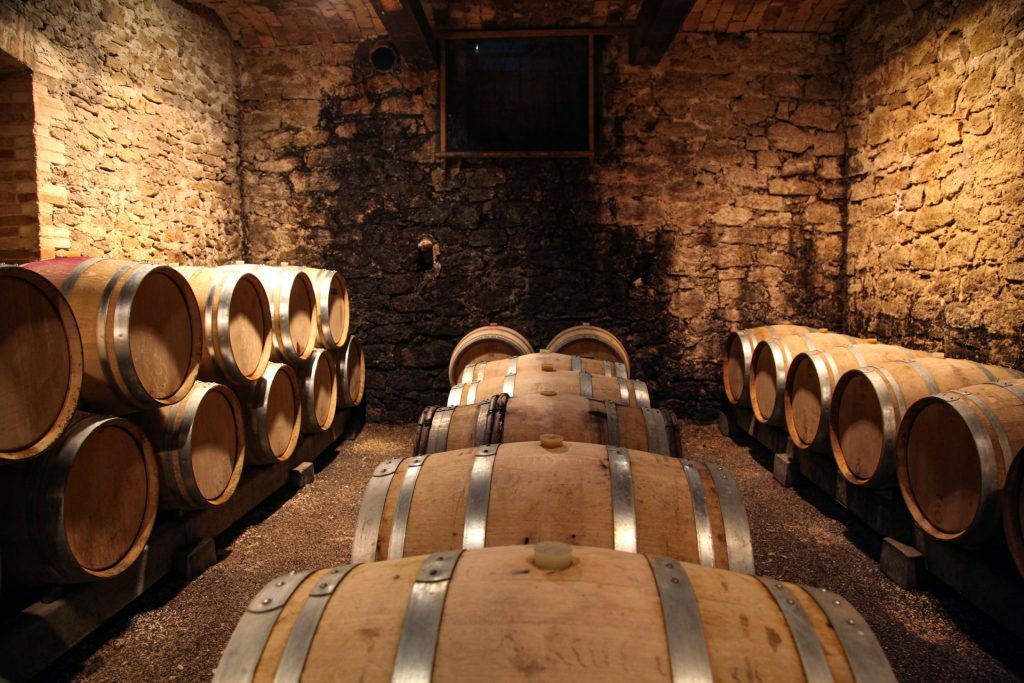
Types of Barrels Used in Whiskey Aging
The type of barrel used in whiskey aging plays a crucial role in determining the final flavor profile of the spirit. While oak remains the predominant choice, there’s considerable variation in the specifics of barrel selection and preparation.
American Oak Barrels
American oak (Quercus alba) is the most commonly used wood for whiskey barrels, particularly in bourbon production. By law, bourbon must be aged in new, charred American oak barrels. These barrels impart strong vanilla, caramel, and coconut notes to the whiskey, along with a golden to amber color.
The level of char on American oak barrels can vary, typically ranging from #1 (light char) to #4 (heavy char). Each level of char produces different flavor profiles, with heavier chars generally resulting in more intense smoky and caramel notes.
European Oak Barrels
European oak (primarily Quercus robur) is often used in Scotch whisky production. It tends to impart more tannic, spicy flavors compared to American oak, with notes of dried fruits and nutmeg being common. European oak is often used for sherry casks, which are popular in Scotch maturation, especially for Speyside whiskies.
Sherry Casks
Sherry casks, traditionally made from European oak, are prized in the whiskey world, especially for Scotch. These barrels, which previously held sherry wine, can add rich, fruity flavors and a darker color to the whiskey. Oloroso and Pedro Ximénez sherry casks are particularly popular choices.
Ex-Bourbon Barrels
Many Scotch and Irish whiskey producers use ex-bourbon barrels for aging. Since bourbon must be aged in new barrels, there’s a ready supply of once-used barrels available. These impart milder oak flavors compared to new barrels, along with subtle bourbon notes.
Wine Casks
Some distilleries experiment with barrels that previously held various wines. Port, Madeira, and even red wine casks are used to finish whiskeys, adding unique fruity and tannic notes.
Other Wood Types
While less common, some distilleries experiment with other wood types. Japanese whisky makers sometimes use Mizunara oak, which can impart unique incense, coconut and sandalwood notes.
Barrel Size
The size of the barrel also affects aging. Standard barrels (around 200 liters) are most common, but some distilleries use larger casks for longer aging or smaller barrels for more intense wood interaction. The choice of barrel is a critical decision for whiskey makers, influencing not just flavor, but also color and mouthfeel.
Types of Barrels and their capacities
| Barrel Name | Previous Alcohol | Material | Capacity |
| ASB | Primarily Bourbon | American oak | 200 liters (53 US gallons) |
| Barrique | Wine (especially Bordeaux) | French oak | 225 liters (59 US gallons) |
| Blood Tub | Varied, often used for aging small batches of whiskey or spirits | Oak (varies depending on region) | 40-50 liters (10-13 US gallons) |
| British Barrel | Varied (can be beer, cider, or whiskey) | Oak (typically English or European oak) | 163.7 liters (36 US gallons) |
| Butt | Sherry (commonly Oloroso) | European oak | 500 liters (132 US gallons) |
| Cognac Transport | Cognac | French oak | 350-400 liters (92-105 US gallons) |
| Demi-Muid | Wine (particularly Rhône wines) | French oak | 600 liters (159 US gallons) |
| Drum | Generally used for rum or whiskey | Oak (varies) | 650 liters (171 US gallons) |
| Firkin | Beer, ale, or cider | Oak | 41 liters (11 US gallons) |
| Gorda | Whiskey (often used for blending purposes) | Oak (American or European) | 700 liters (185 US gallons) |
| Hogshead | Whiskey (often Scotch or Irish whiskey) | American oak (often reassembled from ASBs) | 225-250 liters (59-66 US gallons) |
| Madeira Drum | Madeira wine | European oak | 600 liters (159 US gallons) |
| Octave Cask | Varied, often for whiskey aging | Oak (varies) | 50 liters (13 US gallons) |
| Port Pipe | Port wine | European oak | 550-650 liters (145-171 US gallons) |
| Puncheon | Rum or sherry (depends on the origin) | Oak (American or European) | 450-500 liters (119-132 US gallons) |
| Rundlet | Wine or spirits | Oak | 68 liters (18 US gallons) |
| Sherry Butt | Sherry (usually Oloroso or Fino) | European oak | 500 liters (132 US gallons) |
| Tertion | Cognac or wine | French oak | 350 liters (92 US gallons) |
| Tierce | Wine, rum, or whiskey | Oak | 159 liters (42 US gallons) |
| Tun | Beer, ale, or whiskey | Oak | 982 liters (259 US gallons) |
| Quarter Cask | Whiskey (often for faster aging due to smaller size) | Oak (often American) | 50 liters (13 US gallons) |
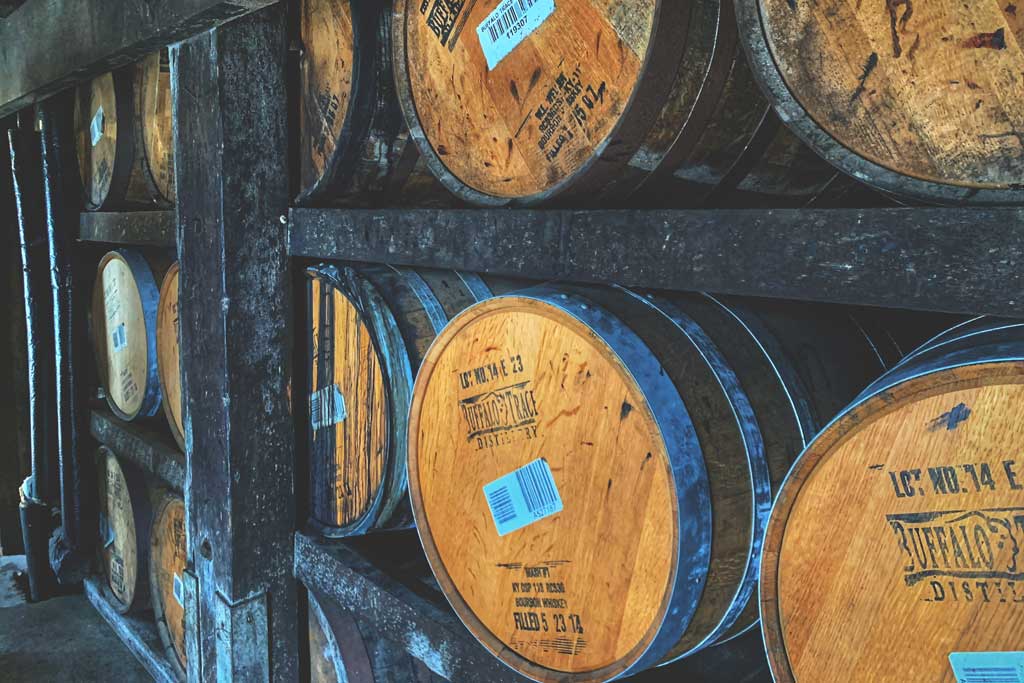
The Importance of Time in Barrel Aging
Time is a crucial factor in the whiskey aging process, often considered as important as the quality of the distillate or the type of barrel used. The duration a whiskey spends in the barrel significantly influences its final character, complexity, and value.
During aging, a series of chemical reactions occur within the barrel. These reactions, which include oxidation, extraction, evaporation, and integration, require time to fully develop the whiskey’s flavor profile.
Extraction is one of the primary processes that benefit from extended aging. Over time, the whiskey absorbs compounds from the wood, including lignins, lactones, and tannins. These compounds contribute to the whiskey’s color, aroma, and flavor, adding notes of vanilla, spice, and oak.
Oxidation, facilitated by the porous nature of the wood, allows small amounts of oxygen to interact with the whiskey. This process softens harsh flavors and develops new, more complex ones. The longer the whiskey ages, the more pronounced these effects become.
Evaporation, often referred to as the “angel’s share,” sees a small percentage of the whiskey lost each year. This concentrates the remaining liquid, intensifying its flavors. In some climates, the alcohol evaporates faster than water, gradually reducing the whiskey’s alcohol content over time.
However, more time doesn’t always equate to better whiskey. Each spirit has a peak maturation point, after which the wood influence may become overpowering, throwing off the balance of flavors. This is where the expertise of the distillery comes into play, determining the optimal aging time for each whiskey.
Legal requirements also play a role in aging time. For instance, Scotch whisky must be aged for a minimum of three years, while bourbon has no minimum aging requirement but must be aged in new charred oak barrels to be labelled as “straight bourbon.”
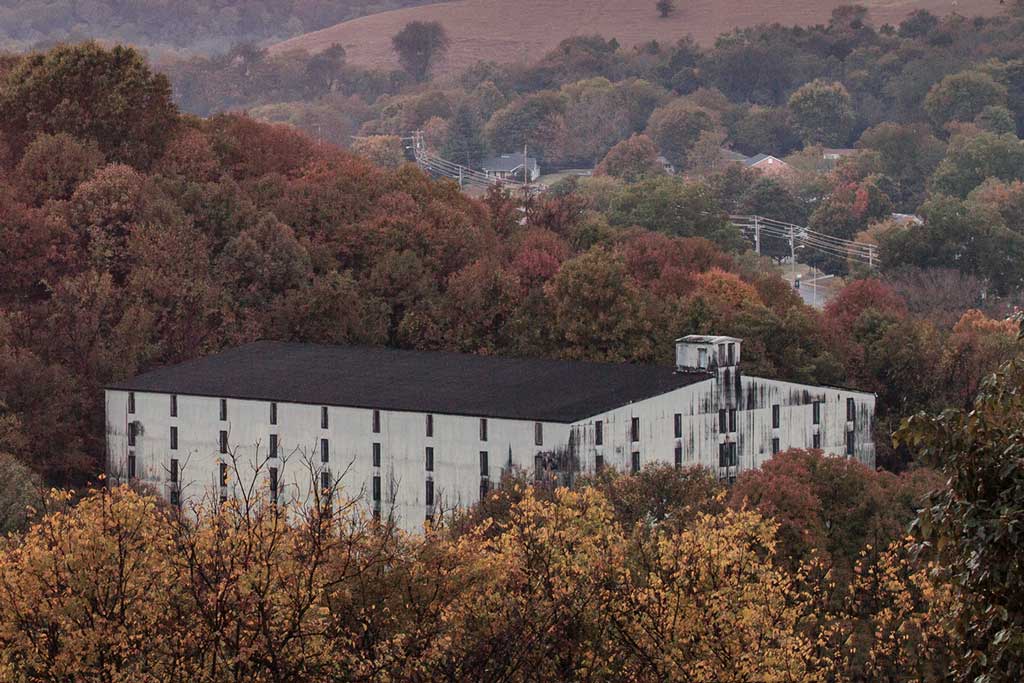
How Different Climates Affect Barrel Aging
The environment in which whiskey barrels are stored plays a crucial role in the aging process, significantly influencing the final product’s flavor, aroma, and character. Climate factors such as temperature, humidity, and air pressure all contribute to how whiskey interacts with the wood barrel over time.
Warm Climates
In warmer climates, such as those found in Kentucky or Tennessee, the higher temperatures cause the wood to expand, allowing the whiskey to penetrate deeper into the barrel staves. This increased interaction accelerates the extraction of wood compounds and the oxidation process, resulting in a faster maturation. Whiskeys aged in warm climates often develop bolder, more robust flavors with pronounced oak characteristics and higher alcohol content due to increased evaporation.
Cool Climates
Conversely, cooler climates, like those in Scotland or Ireland, lead to a slower, more gradual aging process. The lower temperatures cause less expansion and contraction of the wood, reducing the whiskey’s interaction with the barrel. This slower maturation often results in more delicate, nuanced flavors and a smoother character. The cooler temperatures also minimize evaporation, leading to lower alcohol content and higher volume retention, known as the “angel’s share.”
Humidity
Humidity levels also play a significant role. In dry climates, water evaporates faster than alcohol, increasing the whiskey’s alcohol content over time. High-humidity environments have the opposite effect, with alcohol evaporating more quickly than water, resulting in a lower proof spirit.
Air Pressure and Elevation
Elevation and air pressure can affect the aging process as well. At higher elevations, the lower air pressure can increase the rate of evaporation and oxidation, potentially accelerating maturation.
FAQs
1. How long does whiskey need to be aged in barrels?
The aging period for whiskey varies depending on the type and desired quality. By law, Scotch and Irish whiskeys are aged for a minimum of 3 years, but many are aged for much longer. American bourbon has no minimum aging requirement, however straight bourbon must be aged for at least 2 years in new, charred oak barrels. Some premium whiskeys may be aged for 12, 18, or even 25+ years. The legal minimum aging period varies by country and type of whiskey.
2. Can whiskey be over-aged in a barrel?
Yes, whiskey can be over-aged. While aging generally improves whiskey, there’s a point where the spirit can become too woody or tannic. This typically occurs after several decades, but the exact time varies based on factors like barrel size, wood type, and storage conditions. Distilleries carefully monitor the aging process to determine the optimal time for bottling.
3. Why are most whiskey barrels made of oak?
Oak is preferred for whiskey barrels because of its unique properties. It’s strong yet porous, allowing the whiskey to breathe without leaking. Oak contains compounds like vanillin and tannins that enhance the whiskey’s flavor and color. It’s also relatively abundant and can be bent into barrel shapes without breaking.
4. Can whiskey be aged in barrels previously used for other spirits or wines?
Yes, this practice is quite common and is known as “finishing” or “secondary maturation.” Whiskey makers often use barrels that previously held sherry, port, rum, or other wines and spirits to impart additional flavors and complexity to the whiskey. This technique has become increasingly popular in craft whiskey production.
Summary
- Barrel aging is a centuries-old tradition that transforms raw spirit into complex whiskey.
- Oak barrels contribute essential flavors, aromas, and colors to the maturing whiskey.
- The aging process involves chemical reactions between the whiskey and wood compounds.
- Different barrel types and previous contents can significantly influence the final product.
- Time and climate play crucial roles in determining the whiskey’s character and quality.
- Barrel aging is both an art and a science, balancing tradition with innovation in whiskey-making.


